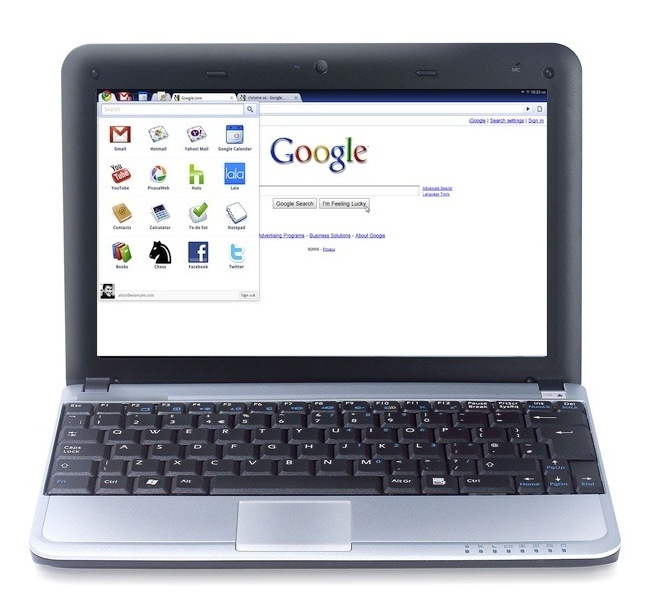Notebook computers powered by Google software are heading to market in a direct assault on the Windows operating system at the heart of Microsoft’s technology empire.
The California-based Internet colossus partnered with electronics makers Samsung and Acer on notebook computers essentially crafted as portals to online applications or services reached through Google’s Chrome Web browser.
No ad to show here.
“Whether it be Microsoft or other operating system vendors, the complexity of managing your computer is really torturing computer users out there,” Google co-founder Sergey Brin said during a press briefing.
“That is a flawed model,” he said. “Chrome notebooks are a new model that doesn’t put the burden of managing a computer on you.”
Thousands of people have tinkered with a prototype Chrome notebook that Google distributed last year to live test the product.
Google collaborated with Samsung and Acer on versions of Chrome notebooks that will be available for purchase online beginning June 15 in Britain, France, Germany, Italy, Spain, Netherlands and the United States.
Acer notebooks based on Chrome will have starting prices of $349 and Samsung models will start at $429, Chrome senior vice president Sundar Pichai said while announcing the news at a Google developers conference in San Francisco.
“It gets pretty obvious, when you use a Chrome notebook you understand how it is different,” Pichai said. “These devices are designed to be really simple to use.”
Chrome notebooks don’t use installed software other than the browser that connects to applications hosted as services in the Internet “cloud.”
Behind the scenes, Google tends to updates, security, and other computer management tasks once the responsibility of hardware owners.
“With the creation of the Series 5 we are again pushing the boundaries of innovation by introducing an entirely new product category to the notebook market,” said Samsung director of mobile PC marketing Scott Ledterman.
“This partnership has allowed us to combine Samsung’s design and engineering expertise with Google’s simple, secure software to provide consumers with a revolutionary notebook to fit today’s Web-centric lifestyle.”
Each Series 5 “Chromebook” features a vibrant 12.1-inch (30.7-centimeter) display screen, a body less than an inch thick, and an overall weight of 3.3 pounds (1.5 kilograms), according to Samsung.
A version of the Samsung Chromebook with built in 3G telecom connectivity will be priced at $500.
Chromebooks take the hassle out of setting up computers and store data online so it is easy to retrieve if hardware needs to be replaced or upgraded, according to Brin.
“I think it is an easier way to compute,” Brin said. “Ultimately, the most precious resource is the user’s time.”
Chrome notebooks raise questions about how much people should trust leaving their data in the hands of cloud services and how well Google engineers will be able to fend off hackers if the system becomes an attractive target.
Chromebook users will also need a way to easily find applications for accessing digital files they use for work or play, according to Michael Cherry at independent analyst firm Directions On Microsoft.
“What is really going to kick Chrome devices off is if there is a location where one can get all the applications they need for them,” Cherry said, noting that software file compatibility will be vital.
“Are the Web-based apps adequate?” he asked rhetorically. “Almost nobody buys a computer for the operating system it runs; people buy them for what they can do.”
While Google has diligently worked to make sure Chromebooks can be used offline, the computing model ultimately relies on being connected to the Internet.
“The best thing about this device is that it spurs everyone else to build better devices,” Cherry said. “In the end, the market becomes better.”
– Glenn Chapman, AFP
